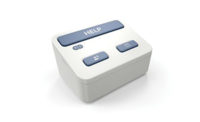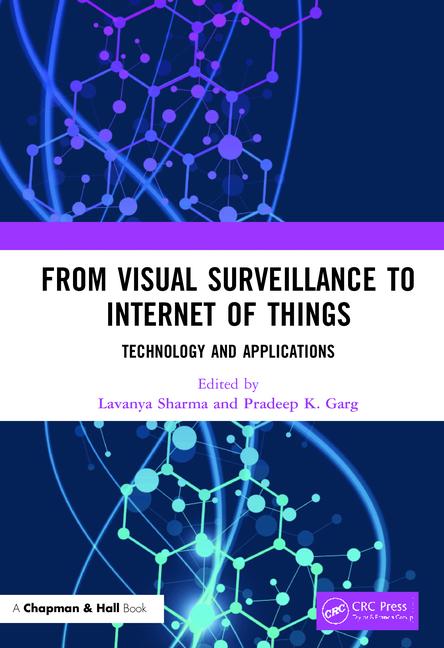Formally stated, Newton’s third law is: For every action, there is an equal and opposite reaction. There are several “actions” generating change within today’s personal emergency response (PERS) offerings, all coming together in new offerings that are more responsive and capable than ever.
As plain old telephone service (POTS) and the public switched telephone network (PSTN) lines are increasingly phased out, the PERS industry’s response is the utilization of new communication technologies, including GSM and cellular. In turn, the mobile opportunities enabled by the cellular and GSM additions are untethering PERS from its previous limitation to the home. The domino effect is opening new opportunities for dealers in the space. Adding cellular is a key focus for manufacturers and central stations — and is an important feature for dealers to look for in a system.
PUSHED TOWARDS CELLULAR
The growing loss of landlines, which was the previous staple communication technology in PERS units, is causing the widest reactive changes in the PERS industry as companies reformulate the available communication technologies in their solutions.
“The biggest advancements in PERS have been related to the changes in communication paths and the mobility desired by end users,” says Morgan Hertel, vice president of operations, Rapid Response Monitoring, Syracuse, N.Y. “We have seen a steady decline of availability and usage of POTS lines, even in the senior market. This has pushed dealers to explore new technologies and even change equipment vendors in some cases.”
Some reports estimate that today nearly one-third of all American homes do not have a landline. This growing trend is also reaching independent seniors who choose to eliminate their phone line to save money. Until now, cutting the phone line could have meant losing their medical response service, which required a landline connection; but technologies such as cellular, GSM and VoIP-compatible options are helping fill the gap.
“Traditionally, PERS devices relied on landlines to communicate with the central station, but as more landlines are going unused in favor of cellular connections, PERS solutions need to adapt as well,” says Duane Paulson, senior vice president, product and market development, Linear LLC, Carlsbad, Calif.
For this reason, Linear developed a cellular module that connects to its self-described “next-generation” PERS product, the PERS-4200, to provide a seamless upgrade to cellular. Besides providing fast data and two-way communication, the module can serve as a safety net for subscribers with landline connections by providing a cellular connection to the central station during a phone outage, Paulson adds.
LogicMark, Louisville, Ky., developed a platform for the CaretakerSentry with a base unit that will communicate over POTS, VoIP and cellular.
President Kevin O’Connor explains that the CaretakerSentry was upgraded to support a cellular accessory so that if a customer has a landline today but cancels it in the future, the dealer does not have to replace the unit but instead just add the cellular accessory and it can be easily connected to the base unit.
The unit will support two-way communication through the base, as well as through an optional two-way voice pendant. By upgrading the pendant to the two-way pendant, the user can communicate directly through the pendant with the central station from anywhere in the house, or in a garage or yard. The CaretakerSentry also will support an emergency wall communicator so that if the user is not wearing the pendant and has a situation in a high-risk area such as the bathroom or at the bottom of the stairs, he or she can push the button on the emergency wall communicator and speak to the central station operator directly through it. This option provides protection for seniors even if they don’t wear the pendant.
Acadian Monitoring Services also recently added a cellular base station PERS unit to its customer offerings. While this type of product has been available for a while, it was not until recently that a cellular base station PERS unit came to market that passed the company’s rigorous product testing, Kristin Hebert, dealer and vendor relations, Acadian Monitoring Services, Lafayette, La., told SDM.
“We believe this unit will benefit the end user by allowing us to provide our service to customers that do not have a POTS line, yet are not quite active enough to have a need for the GPS PERS unit,” he said.
Cellular not only brings service to clients who would not have it without the technology, but it also saves valuable time, Hebert reports. “As we work in an industry where seconds matter, it has become imperative that the industry provide PERS units with faster and more reliable alarm transmission. With the new cellular base station PERS units, we have already seen drastic reductions in transmission times. Signals can now be transmitted in about one-fifth of the time it takes alarm signals from some traditional PERS units,” he shares.
GOING MOBILE
With units gaining cellular communications, it also cuts the cord with the traditional home-bound, landline-defined service. Cellular phones, by definition, are mobile, and there is a surging focus on the mobile capabilities of cellular-driven PERS systems.
The traditional view of PERS as an in-home service for the infirmed is no longer valid, states Kevin McCarthy, national sales manager, EMERgency24, Chicago.
“At EMERgency24, we see PERS as any application whereby we use two-way voice communication to interact with the end user immediately to confirm or deny that the alarm signal we received at the central station is actually an emergency. The end user could be hiking the woods, making deliveries in the city, or spending time in their home, because two-way voice is no longer limited to perimeter around a base station of speakerphone. Today’s PERS pendants are mobile devices that can be GPS tracked so that should an emergency happen away from home, the central station can identify the location and call the appropriate emergency responders to provide help. This is all driven by advancing technology of the hardware.”
The proliferation of smartphones is generating changes in PERS-type offerings. Today, more than half (56 percent) of Americans have smartphones, according to the Pew Internet & American Life Project. While a smaller portion of senior citizens own smartphones (34 percent of individuals between the ages of 50 and 64, and 11 percent of individuals who are 65 and older), the number is growing. Plus, PERS doesn’t just apply to the elderly. Many people across multiple age brackets can have a need for PERS monitoring.
“While seniors make up the greatest segment of PERS users, there’s also an increase in demand from places you wouldn’t expect. One example is 24-hour gyms that are often unstaffed at night. For an added layer of security without staff present, individuals can work out with PERS pendants and have help just a button push away. There are a lot of examples like this that are contributing to changes in how products are developed and marketed,” Linear’s Paulson says.
He advises that as an industry we stop thinking only about the traditional PERS market and expand our thoughts to a broader health and wellness offering.
There is a growing transition to mobile, which Rapid Response has recognized. In addition to upgrading its communications options by utilizing GSM, the company also has added GPS communication.
“These devices can travel with the customer and in an emergency allow our specialists the ability to speak with them over a two-way device and provide responders with their location based on GPS coordinates. This has positioned our dealers to offer completely mobile solutions to their customers, which has resulted in significant account growth,” Hertel describes. Read “PERS on the Move” for more on the growing mobile PERS, or MPERS, opportunities.
To meet the broadening interest in such applications, American Two-Way (ATW) released a solution that it believes will have wide implications in the mobile PERS space. The company now can turn any cell phone on any network into a mobile PERS device without the use of an app.
“We call this service Mobile Safety Concierge and it significantly expands the targeted end user audience as it’s no longer just for seniors. This type of service has as many applications,” explains Christopher Baskin, chief executive officer of American Two-Way, located in North Hollywood, Calif. “Anyone who is feeling unsafe for any reason can use this. Perhaps they are in a dark parking lot going to their car, or are a lone worker needing protection.”
Baskin predicts that with more than 350,000,000 cell phones in use in the United States this service could dramatically increase dealers’ RMR by allowing them to turn all their current and future customers’ cell phones into a mobile PERS device. In addition, the dealer incurs no hardware or cellular expenses, as it is a service added to the end user’s existing phone. “Most people do not want to carry two devices, so by turning the device that’s already in their pockets into a monitored emergency device, dealers have vast opportunity to increase their revenue and streamline the service,” Baskin adds.
The technology pulls the GPS from the phone or triangulates it if no GPS is available. The alarm operator not only knows instantly the caller’s location but also who the PSAP responder is to the location for immediate dispatch should the need arise.
BROADER SERVICES WITH CELLULAR
Advancements in wireless communications protocols and cloud-computing technology are spurring advancements and make advanced wellness solutions possible. “Wireless devices and reliable communications protocols make activity tracking throughout the home possible, and cloud-computing allows powerful learning algorithms to quickly understand activity patterns, detect anomalies, and alert family members and caregivers,” describes Alarm.com, Vienna, Va.
He adds that research on the effectiveness of PERS indicates that in 80 percent of emergencies, traditional PERS buttons do not get pushed. This is because patients fail to wear them (estimated 50 percent non-compliance rate), lose consciousness when they fall, become confused or disoriented, or don’t believe that their emergency is sufficiently acute to warrant a button push.
Alarm.com’s wellness solution solves these problems by integrating passive sensors throughout the home, and then learning the occupant’s routines and patterns. When something is out of the ordinary, the service alerts family members. “Residents can still alert through a button, but its solution provides multiple tools for detecting and alerting a problem,” the company says.
The solution is fully integrated into Alarm.com’s connected home platform so dealers can include it in the solutions they customize for property owners.
Essence USA Inc., Hoboken, N.J., recently launched its third- generation Personal Emergency Response System (PERS), EverGuard-CareTM, a wireless in-home care solution, which can be enhanced with an intelligent prediction analytics solution that tracks the resident’s daily routine, creates an activity pattern and alerts upon any deviation from the daily routine. This smart detection of potential worsening health conditions at a very early stage triggers an alert to the caregivers and family members via a mobile or Web app. It enables the family members to be notified anywhere, anytime, in real time and the healthcare providers to provide immediate treatment when needed.
“This intelligent solution based on the PERS system enables seamless 24/7 monitoring and care for the elderly residents, enabling them to carry on living independently and peace of mind for their family members, while improving the healthcare provider’s business and expanding their offering to their customers,” says Yaniv Amir, president.
There is more competition in the PERS industry, capitalizing on the growing number of new people turning 65 each year. PERS businesses will need to be more creative in acquiring new accounts and formulating ways to differentiate themselves, whether by service quality or price, from their competitors,” Hertel thinks. These new technology advancements — starting with cellular communications — are opening up the opportunities to do just that.
Capitalizing on the Technology
SDM asked, “What advice do you have for dealers to capitalize on new technologies or services in PERS?”
“The new mPERS technologies also add an additional level to consider. The dealer must educate themselves on how GSM and GPS work, and how to accurately describe the monitoring process. They must also collect information on the customer that would not have been required for a standard PERS account. Since the customer has the ability to be away from their home when an emergency occurs, monitoring of the account is more challenging and may require a physical description (sometimes even a photo) of the customer and a description of any vehicles that the customer may utilize,” says Morgan Hertel, Rapid Response Monitoring.
Capitalizing on the Technology
SDM asked, “What advice do you have for dealers to capitalize on new technologies or services in PERS?”
“We’ve seen dealers who’ve partnered with professional caregiving organizations. Entering into a partnership builds credibility and also gives dealers insight into how they can serve the segment more effectively. Once this relationship is established, it can also be useful for generating testimonials, case studies, videos and other marketing materials,” says Duane Paulson, Linear.











